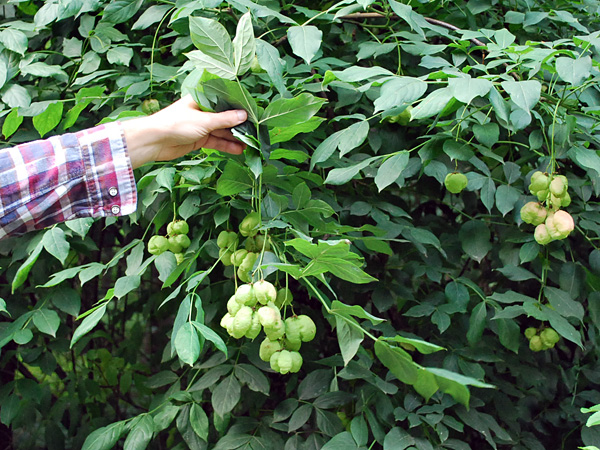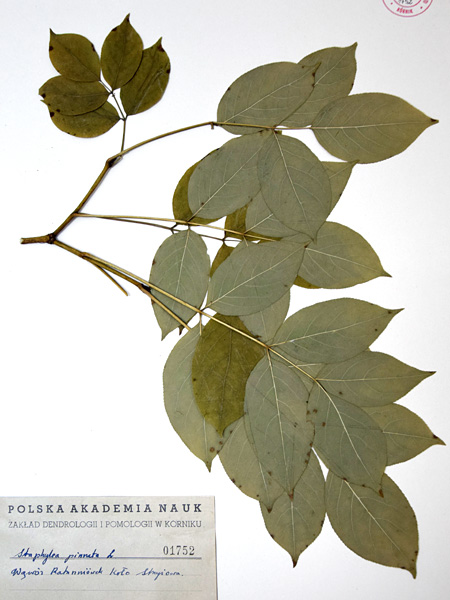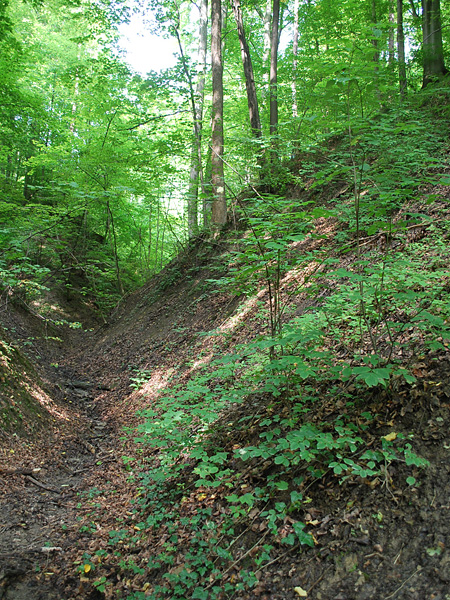Distribution of the European bladdernut in Poland – a pilot study and a new research project
When preparing a grant proposal, it is good practice to conduct a pilot study. In the case of the project entitled "Native or foreign? Phylogeography of European bladdernut Staphylea pinnata L. in Central Europe", authored by Łukasz Piechnik from our Institute and approved for funding in the 20th edition of the PRELUDIUM competition, the pilot study was conducted with an admirable scale and with the use of interesting, not always obvious methods. As a result, a map of the sites of Polish populations of the European bladdernut was created, the most complete so far.
Data on the distribution of the European bladdernut were collected over many years, starting with traditional methods – searching the literature, public databases and herbarium collections. In the next step, an innovative approach was applied, consisting in combining information from historical maps and LIDAR data (from the Geoportal website), aimed at identifying specific natural and artificial landforms (ravines, hillforts, foundations of non-existent structures) – potential sites of the European bladdernut occurrence. This method gave good results in the case of forested areas. Much valuable information was obtained thanks to the involvement of numerous people who provided their unpublished data (Citizen Science). They were professional botanists, people from nature protection services, foresters, amateur botanists and nature enthusiasts. Inquiries about the species distribution were posted in popular science publications, on Internet nature forums and blogs, and on Facebook. The databases of ethnographic museums were searched and information was collected from ethnologists in order to identify areas where the European bladdernut-related traditions are still cultivated (e.g., Easter palms, crafts made of seeds). In areas where the European bladdernut populations were once naturally-occurring (today considered extinct), posters were hung on notice boards and local residents were questioned. Surprisingly many European bladdernut sites were found using the Google Street View application. All obtained information about the occurrence of the European bladdernut was verified in the field.
The results of the inventory of European bladdernut sites in Poland (354 sites, including 164 new ones) were presented in the article published in the latest issue of Plant and Fungal Systematics:
Piechnik Ł., Kurek P., Wójcik T. 2021. Distribution of the European bladdernut Staphylea pinnata (Staphyleaceae) in Poland. Plant and Fungal Systematics 66: 166–183. DOI
The collected data will be the starting point for research planned in the project on the genetic variability of the European bladdernut populations, their origin (natural vs anthropogenic) and their relationship with populations from other European countries. We encourage you to read the detailed description of the project.

European bladdernut fruit.
Photo: Ł. Piechnik.

European bladdernut collected in 1958 from the site near Strzyżów (Ratuszniówek Gorge, Strzyżowskie Foothills) – herbarium sheet deposited at the Herbarium of the Institute of Dendrology of the Polish Academy of Sciences in Kórnik.
Photo: Przemysław Kurek.

Confirmed site of European bladdernut in the Ratuszniówek Gorge.
Photo: Ł. Piechnik.






